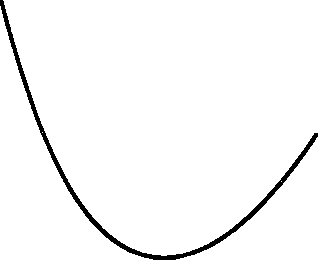-0.05

■0.25 --------'-----------------------------------
4 6 8 10 12 14 16
L∕σ
Figure 5.2: Grand free energy of the copolymer per unit volume as a function of the
width of the computational domain. For the diblock copolymer, N = 8 and e∕kT = 0.289.
respectively. For relatively smaller incompatibility between the two blocks, the equi-
librium density profiles are approximately sinusoidal. However, as the incompatibility
increases, the profiles become more like step functions. Again, the equilibrium pe-
riods for these copolymers were calculated from their respective free energy curves
shown in fig. 5.3b. As the incompatibility increases, the equilibrium lamellar period
increases and the equilibrium free energy decreases. The highly incompatible blocks
try to minimize their contacts by decreasing the number of interfaces between them,
thereby increasing the equilibrium lamellar period.
The effect of increasing the number of segments in each block is shown in fig. 5.4
(e/кТ — 0.289). Increase in the number of segments leads to increase in the equi-
librium lamellar period and decrease in the equilibrium free energy. This is due
126
More intriguing information
1. Poverty transition through targeted programme: the case of Bangladesh Poultry Model2. Improvements in medical care and technology and reductions in traffic-related fatalities in Great Britain
3. Urban Green Space Policies: Performance and Success Conditions in European Cities
4. Macro-regional evaluation of the Structural Funds using the HERMIN modelling framework
5. Initial Public Offerings and Venture Capital in Germany
6. Wage mobility, Job mobility and Spatial mobility in the Portuguese economy
7. The name is absent
8. Group cooperation, inclusion and disaffected pupils: some responses to informal learning in the music classroom
9. Stable Distributions
10. TECHNOLOGY AND REGIONAL DEVELOPMENT: THE CASE OF PATENTS AND FIRM LOCATION IN THE SPANISH MEDICAL INSTRUMENTS INDUSTRY.